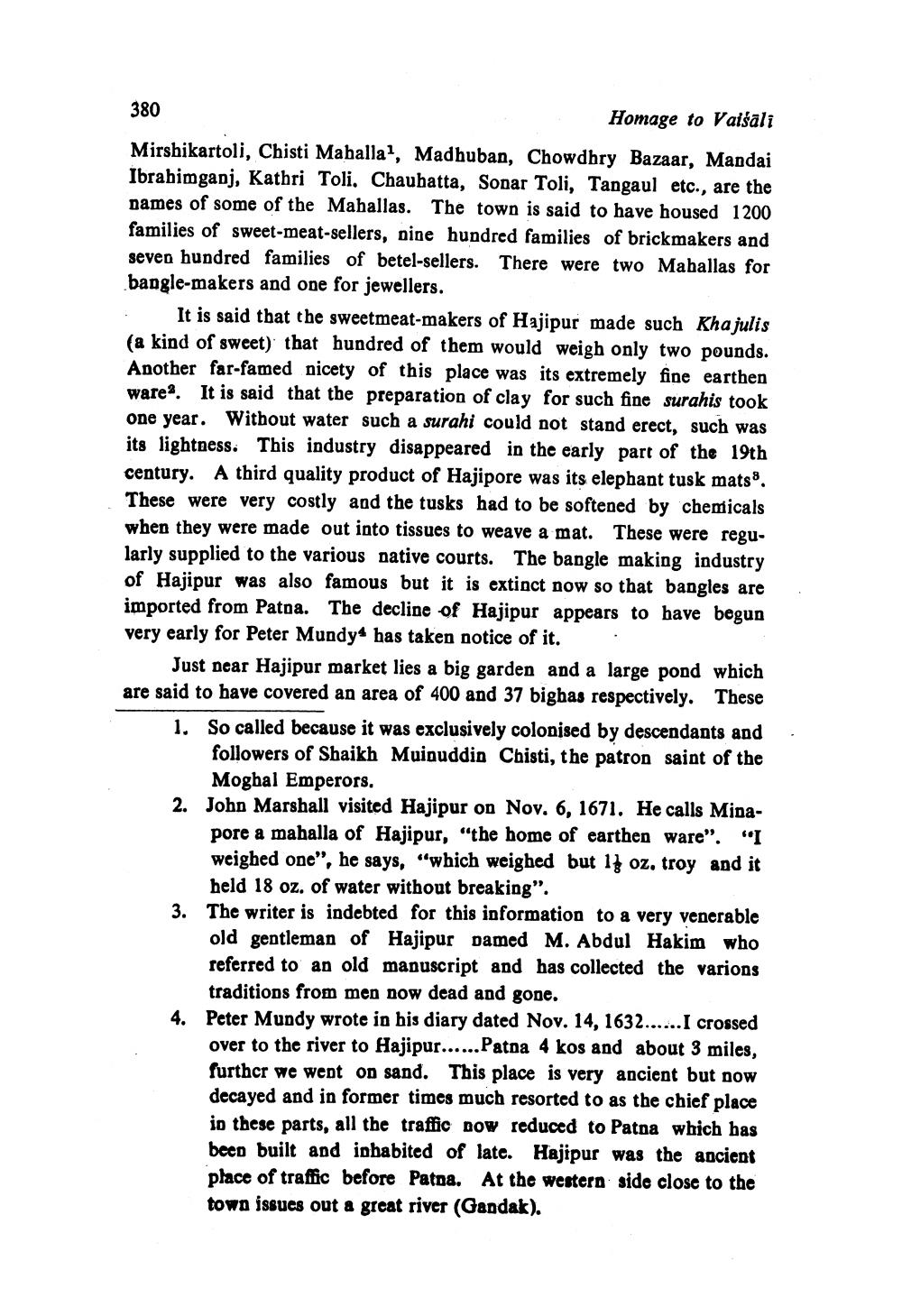________________ 380 Homage to Vaisali Mirshikartoli, Chisti Maballa, Madhuban, Chowdhry Bazaar, Mandai Ibrabimganj, Kathri Toli. Chaubatta, Sonar Toli, Tangaul etc., are the names of some of the Mahallas. The town is said to have housed 1200 families of sweet-meat-sellers, nine hundred families of brickmakers and seven hundred families of betel-sellers. There were two Mahallas for bangle-makers and one for jewellers. It is said that the sweetmeat-makers of Hajipur made such Kha julis (a kind of sweet) that hundred of them would weigh only two pounds. Another far-famed nicety of this place was its extremely fine earthen warea. It is said that the preparation of clay for such fine surahis took one year. Without water such a surahi could not stand erect, such was its lightness. This industry disappeared in the early part of the 19th century. A third quality product of Hajipore was its elephant tusk mats 8. These were very costly and the tusks had to be softened by chemicals when they were made out into tissues to weave a mat. These were regularly supplied to the various native courts. The bangle making industry of Hajipur was also famous but it is extinct now so that bangles are imported from Patna. The decline of Hajipur appears to have begun very early for Peter Mundy has taken notice of it. . Just near Hajipur market lies a big garden and a large pond which are said to have covered an area of 400 and 37 bighas respectively. These 1. So called because it was exclusively colonised by descendants and followers of Shaikh Muinuddin Chisti, the patron saint of the Moghal Emperors. 2. John Marshall visited Hajipur on Nov. 6, 1671. He calls Mina pore a mahalla of Hajipur, "the home of earthen ware". "I weighed one", he says, "which weighed but 1} oz, troy and it held 18 oz. of water without breaking". 3. The writer is indebted for this information to a very venerable old gentleman of Hajipur named M. Abdul Hakim who referred to an old manuscript and has collected the varions traditions from men now dead and gone. 4. Peter Mundy wrote in his diary dated Nov. 14, 1632...... I crossed over to the river to Hajipur......Patna 4 kos and about 3 miles, further we went on sand. This place is very ancient but now decayed and in former times much resorted to as the chief place in these parts, all the traffic BOW reduced to Patna which has been built and inhabited of late. Hajipur was the ancient place of traffic before Patna. At the western side close to the town issues out a great river (Gandak).




